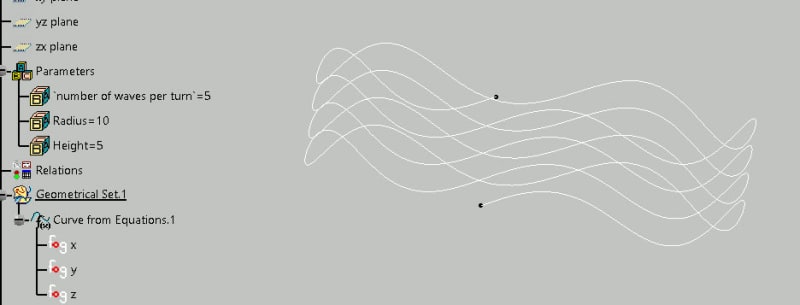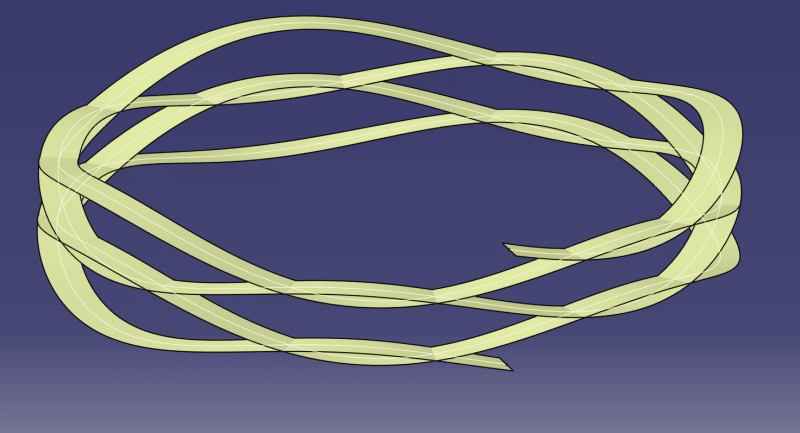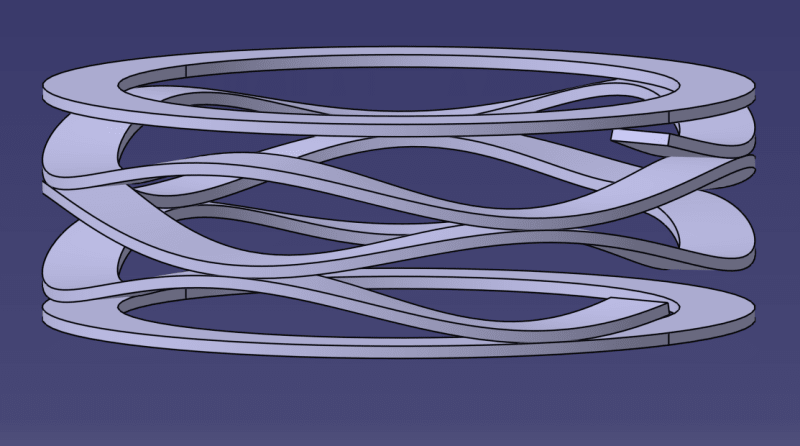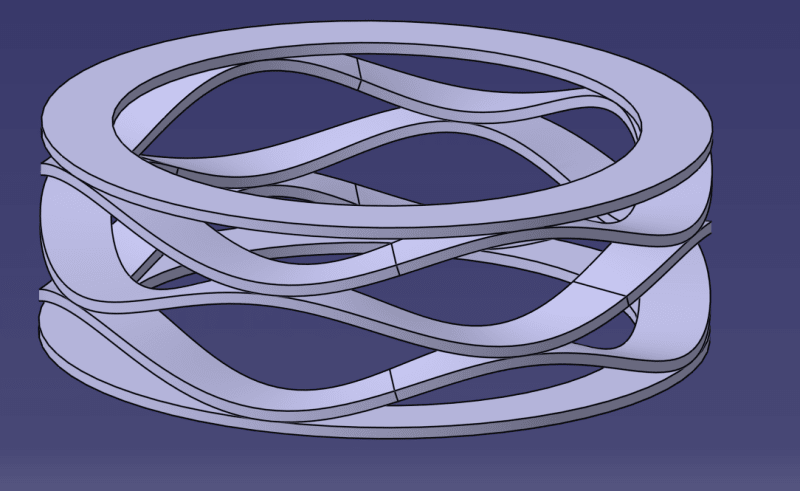Hi Everyone,
I'd like to model a multi turn wavespring for a test project.
The only info I found is a pdf catalog containing some basic knowledge. Is it possible to model the wave spring using the catalog data?
I haven't come across Curve from Equation or Laws before, so this is completely unknown territory for me.
My first approach was making an equation for the spline of the wave then project the curvature to a cylindrical surface then sweeping the section. After some math stuff I got stuck with the equation (calculus isn't my strength).
Here's the spring parameters:
Free height (FH): 5,72 mm
Housing dia (Dh): 18 mm
Shaft dia (Ds): 13 mm
PCD: 15,5 mm
Thickness: 0,3 mm
Width: 1,83 mm
Waves: 3,5
Turns: 3
Can anybody post a possible solution, or some tips where to proceed?
I'd like to model a multi turn wavespring for a test project.
The only info I found is a pdf catalog containing some basic knowledge. Is it possible to model the wave spring using the catalog data?
I haven't come across Curve from Equation or Laws before, so this is completely unknown territory for me.
My first approach was making an equation for the spline of the wave then project the curvature to a cylindrical surface then sweeping the section. After some math stuff I got stuck with the equation (calculus isn't my strength).
Here's the spring parameters:
Free height (FH): 5,72 mm
Housing dia (Dh): 18 mm
Shaft dia (Ds): 13 mm
PCD: 15,5 mm
Thickness: 0,3 mm
Width: 1,83 mm
Waves: 3,5
Turns: 3
Can anybody post a possible solution, or some tips where to proceed?






![[smile] [smile] [smile]](/data/assets/smilies/smile.gif) So, what parametervalues did you use?
So, what parametervalues did you use?